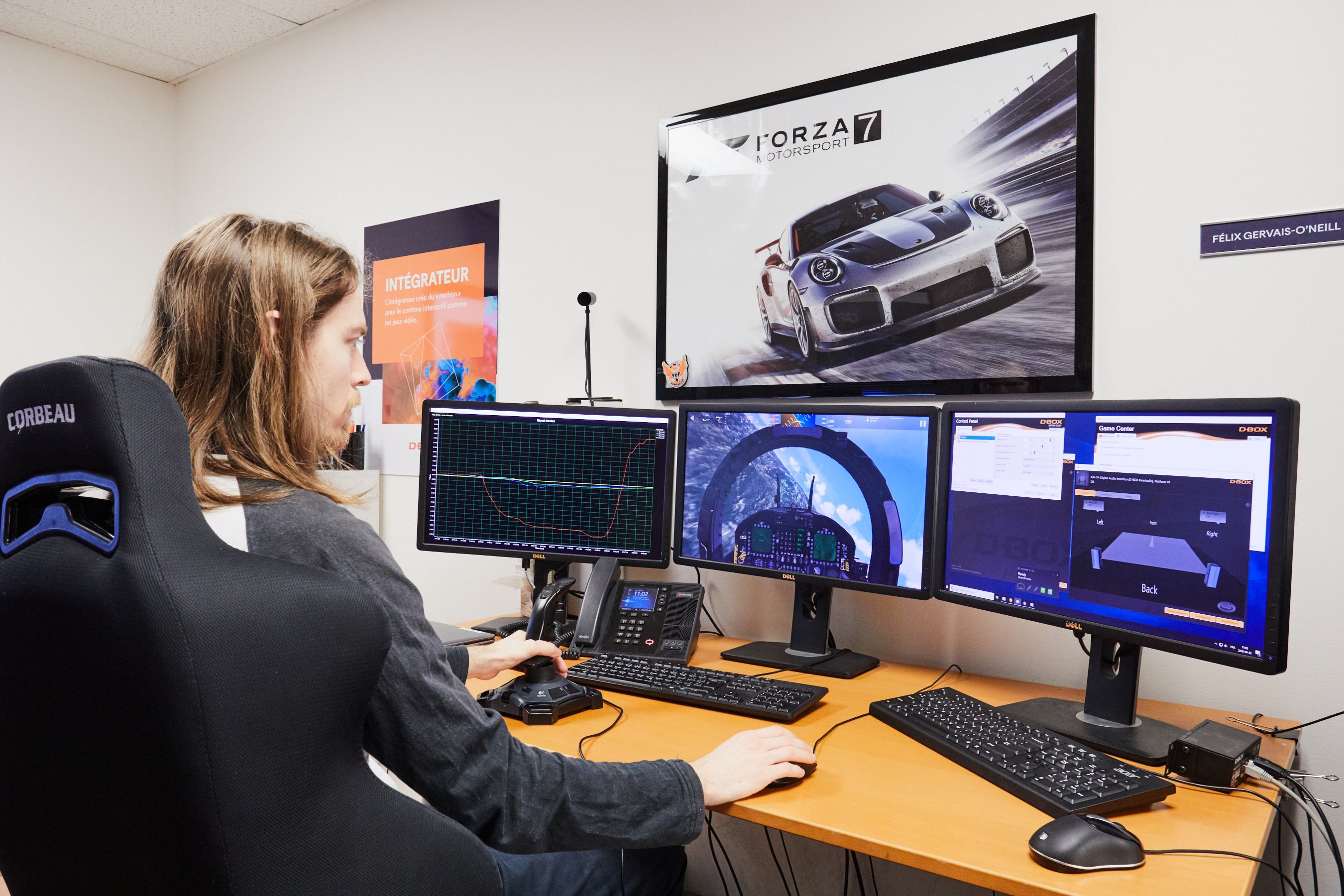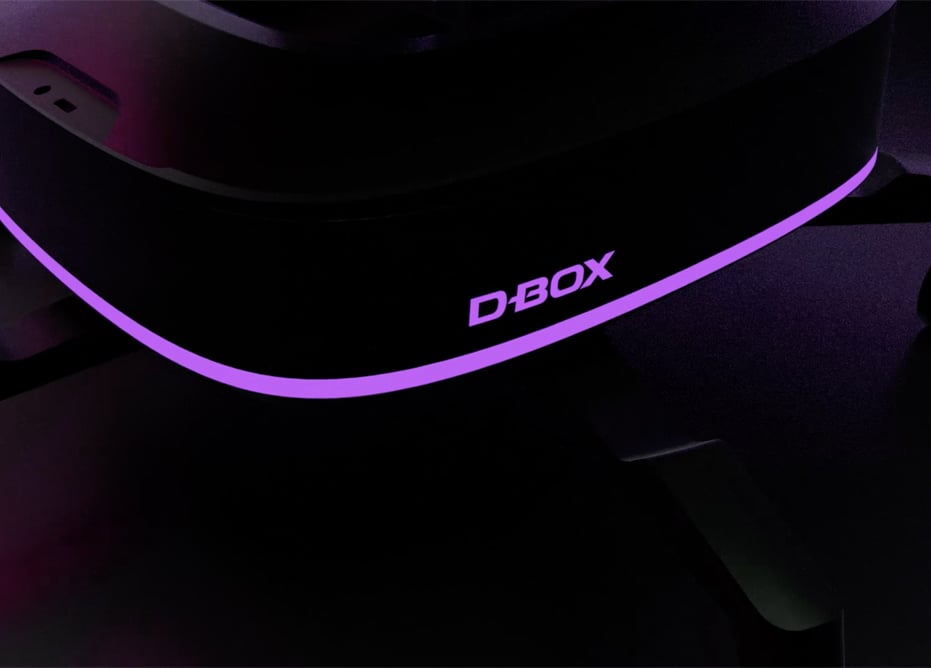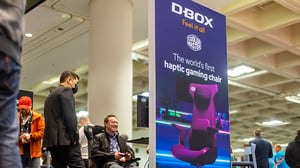When a game studio asks D-BOX to code their game, who is usually your point of contact?
The point of contact for the integration portion is usually a programmer with a good overall knowledge of a game’s code, so that way they will know where to look for the data we need to integrate D-BOX haptics directly into the game’s telemetry.
Other than programmers, small to midsize studios tend to have the CTO, VP of Technology and Creative Director actively involved in the process as well. The largest studios sometimes have us go through the Business Development team or the Product team to integrate D-BOX haptics!
What goes into the process of coding a game?
There are three main steps in the process of coding a game with haptic feedback: integration, validation, and game build encoding.
What goes into integration?
The very first step is for our partners to download the Live Motion SDK that we have available on our website, which contains sample code and a debugging tool. Essentially, the Live Motion SDK is a set of tools comprising precompiled static libraries and header files that allows the software to send data to the D-BOX system. This means that the studio gets to integrate what they want to trigger a haptic effect. It can be a spontaneous cue like a sound, or continuous data based on physics!
Since haptics aren’t always intuitive, D-BOX developers are always there to assist studio developers and to make recommendations on what would be an interesting cue to have an effect and at what moment.
Alternatively, D-BOX can do this step physically at the gaming studio to expedite the process.
Ultimately, the integration process is really a collaboration between game creators and D-BOX that helps further bring their ideas to life in a dimension that goes beyond sight and sound.
Finally, if you prefer to try a different type of haptic experience that's based on sound rather than in-game actions, then Adaptive Audio Mode is the mode for you! Adaptive Audio Mode allows gamers to experience textures and vibrations (no movement) based on the game’s audio, which means that as opposed to feeling your character jump, you'll feel the ground shake from the explosion that went off behind you, you'll feel the click-clack-click-clack of your horse galloping and you'll be able to tell which car you're driving based purely on the engine vibrations! These ambient noises and their accompanying vibrations and textures help immerse you into the game's environment and provide you with a unique gaming experience. However, the best haptic experience will always be with coded games.

What goes into validation?
Once the developer writes a few lines of our SDK and works to link the static libraries in the project, a console window will open. This window shows all the calls made to D-BOX in the previous step in real time and records all telemetry data, creating a log file with it!
With this log file, the developer can validate that the game is sending the proper data to D-BOX, which is the first real step in coding a game. If the log file doesn’t contain errors and the data is both clean and accurate, then D-BOX can move forward with creating the haptic dynamic link library (DLL) for the game.
What goes into game build encoding?
Once the desired cues are validated on the game studio’s end, the D-BOX team receives a build of the game so they can create the haptic effects based on the integration. This build can be shared via the preferred studio’s method!
Since D-BOX has privacy at its core, we have a certified secure area in our offices for this stage of work to be done. Alternatively, we can do this stage at the office of the game studio if they so desire.

What happens once those steps are done?
Once the game is integrated and D-BOX has created haptic feedback for it, we do quality control to ensure that it’s a high-quality experience! For the game developer, no further work is necessary. They don’t need to distribute any DLL’s as this is done by D-BOX! All they need to do is go on to distribute the game like they normally would.
The very last step in this process is for D-BOX to add the title to our Game Center and to our online catalogue of content!
Do gaming studios need a D-BOX haptic seat to integrate a game?
Having a seat is not required since they do not create the haptic feedback, they simply validate integration.
That being said, it’s always more fun to feel the haptic feedback and to feel the game come to life as you’re integrating it! If they do have access to a D-BOX haptic system, the studios can feel their progress and the new effects if they want.

Bringing games to life through haptics: a collaborative effort
Coding a game is truly a team process that combines the creative vision of the gaming studios with the more than 25 years of haptic experience of D-BOX to elevate the gaming experience to a new level for players and to bring the studios’ vision to life!
While action games and D-BOX haptics go hand-in-hand, D-BOX can add ambiance and suspense to any type of game and content.







